Table of Contents
Human beings have always been fascinated with architecture. Building a skyscraper is a risky task involving several steps from designing to installing an elevator or escalator. The tallness and size of the buildings were essential in giving them a glorious feeling. As time progressed and people outgrew their lands, buildings became taller and taller to accommodate more in little space.
In every urban sprawl, these rising towers aid human progress by rapidly increasing the number of inhabitants. Think of dreamy places like San Francisco, Hong Kong, Midtown Manhattan, the Middle East, Kuala Lumpur, or even New Zealand! An urban habitat needs Skyscrapers for its progress!
A skyscraper is a building with at least 150 meters of height. A skyscraper with more than 300m of altitude is a supertall skyscraper. And one with more than 600m of height is known as a mega tall skyscraper.
How Is a Skyscraper Built Step by Step?
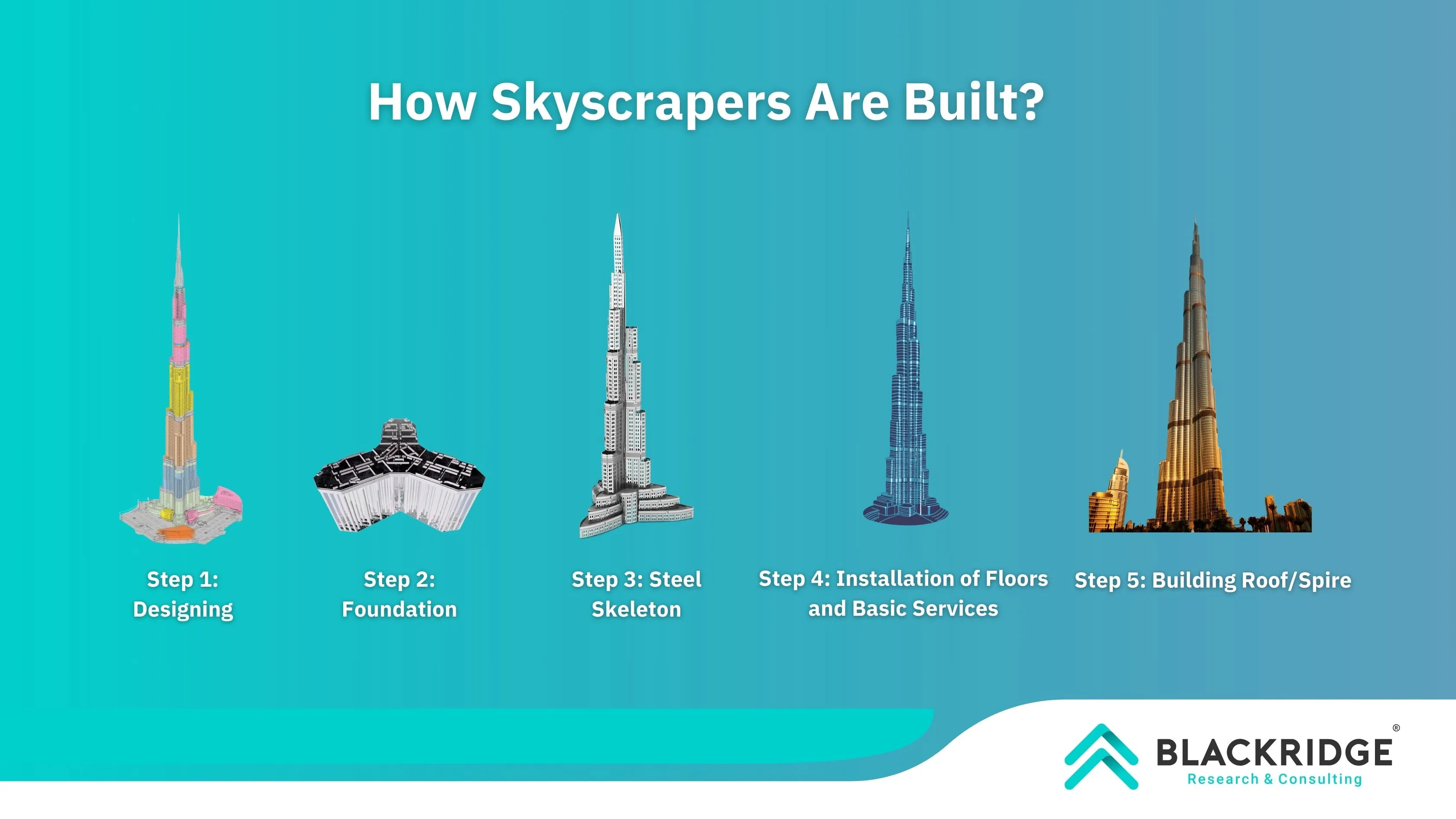
Here are the major steps in building a skyscraper:
Skyscraper Design
Foundation
The Steel Skeleton
Installation of Floors and Basic Services
Building Roof/Spire
Skyscraper Design
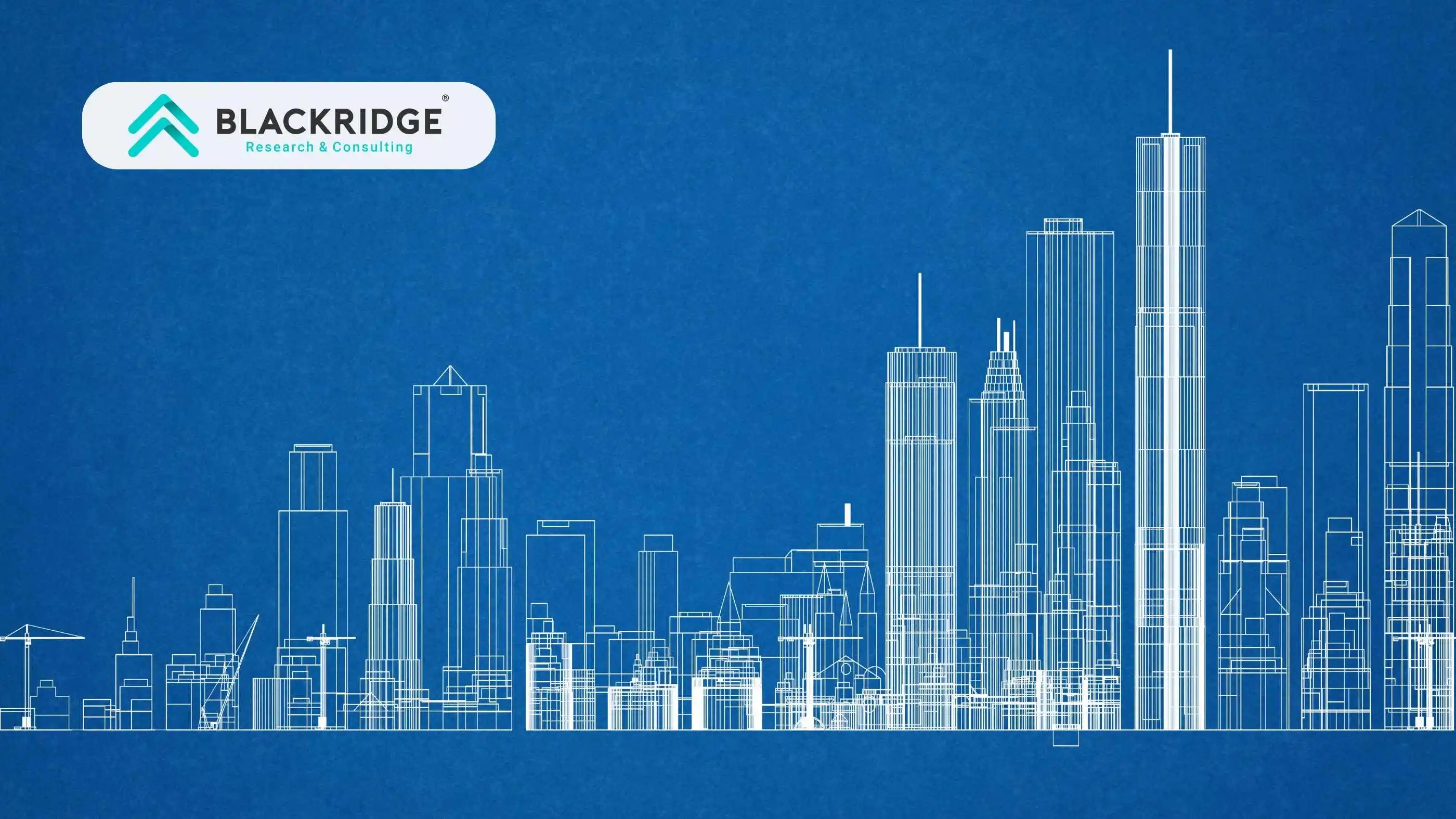
Building a skyscraper is, obviously, not an easy task. Skyscrapers need to battle major forces of nature such as gravity, heavy winds, and others. The hurdles put forward by nature can be overcome by using ingenious engineering methods and creative designs.
Still confused how are tall buildings built? For instance, Shanghai Tower in China is built twisted to confuse the incoming winds. Similarly, Lotte World Tower, located in Seoul, also whirls its body to respect the wrathful winds.
Find Updates on the Under Construction Tallest Skyscrapers Across the Globe Subscribe Now!
Design is not just for safety precautions. It is also an art. Architecture is at its best in gorgeous buildings such as the Chrysler Building, Flatiron Building, Hudson Yards and the Empire State Building in New York City. Also, Wainwright Building, Petronas Tower, Central Park Tower, and the list goes on!
Usually, the skyscraper construction is mostly contract-based. And an architect or designer is hired through any of the common construction contracts.
How to Design Skyscrapers?
Foundation
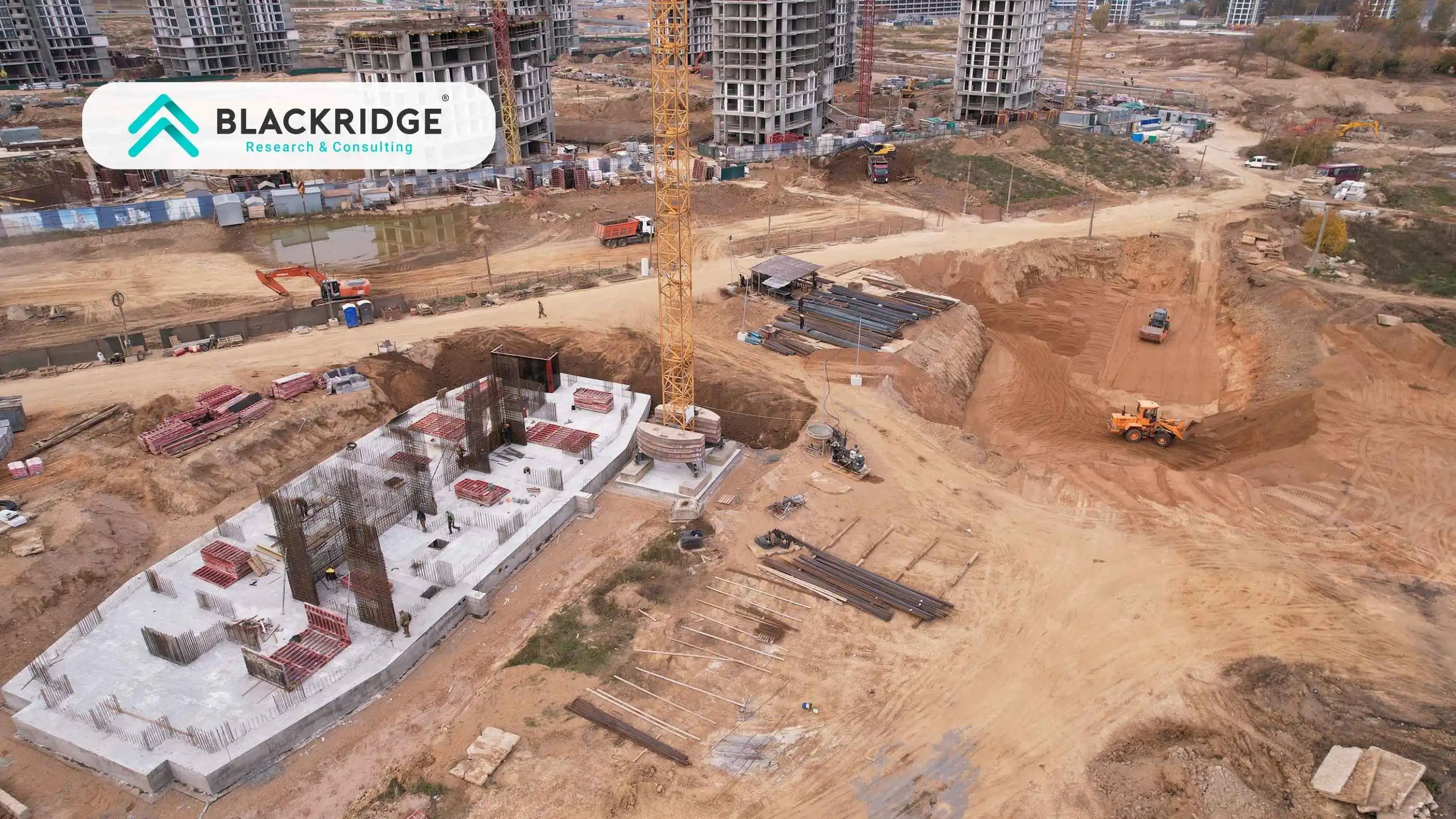
Just like any other building, a skyscraper also requires strong foundations. Without a strong foundation, the building is always prone to collapse in the skyscraper construction process.
Now, the basic principle of the foundation of a skyscraper is “the deeper you dig, the higher you build.” Or “The size of the base is proportional to the height of the building.” But it no longer has to be like that! With the help of clever engineers, one could even build a skyscraper on the sand. Remember, the world’s tallest building- Burj Khalifa, was constructed on sand!
Usually, the foundations are laid in bedrock. But the availability of bedrock is susceptible to the geography and geology of the region. But, as we mentioned before, engineering marvels have made it possible to build a tall building anywhere on the planet!
The Steel Skeleton
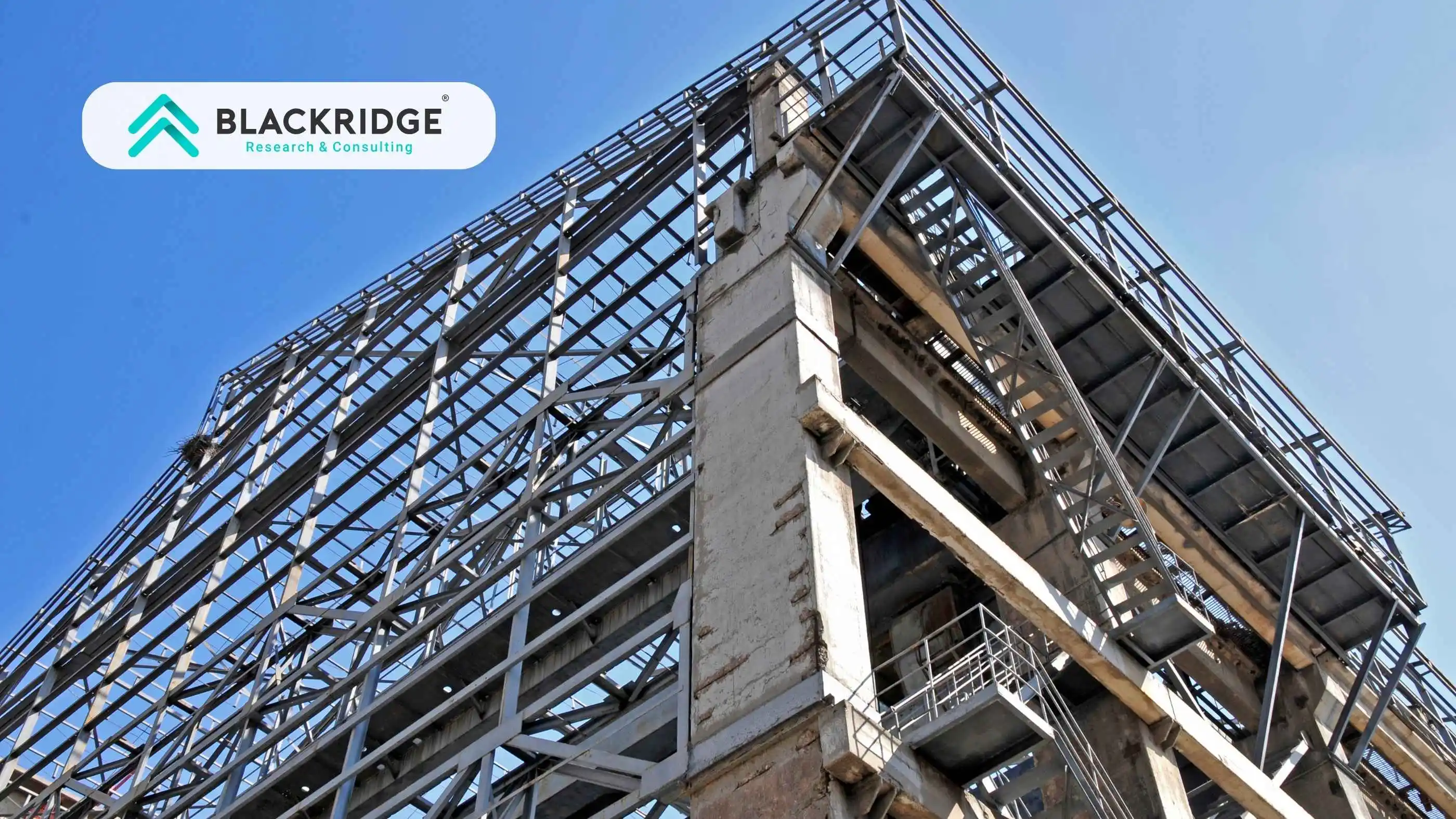
The next step after building the foundation is to erect the structural system. To avoid risks in construction projects, the skeleton of skyscrapers is usually made using steel beams, as they can take more strain and have more compression.
The skeleton is the central part of the structure. The vertical beams are built at the perimeter of the building, and each side is connected by horizontal girder beams to the adjacent sides. For more strength, diagonal beams are linked from the vertices to the center of the structure.
After the steel skeleton is built to perfection, the concrete is poured into, gluing it together.
And using cranes, the steel structure is built upwards till its spire!
Installation of Floors and Basic Services
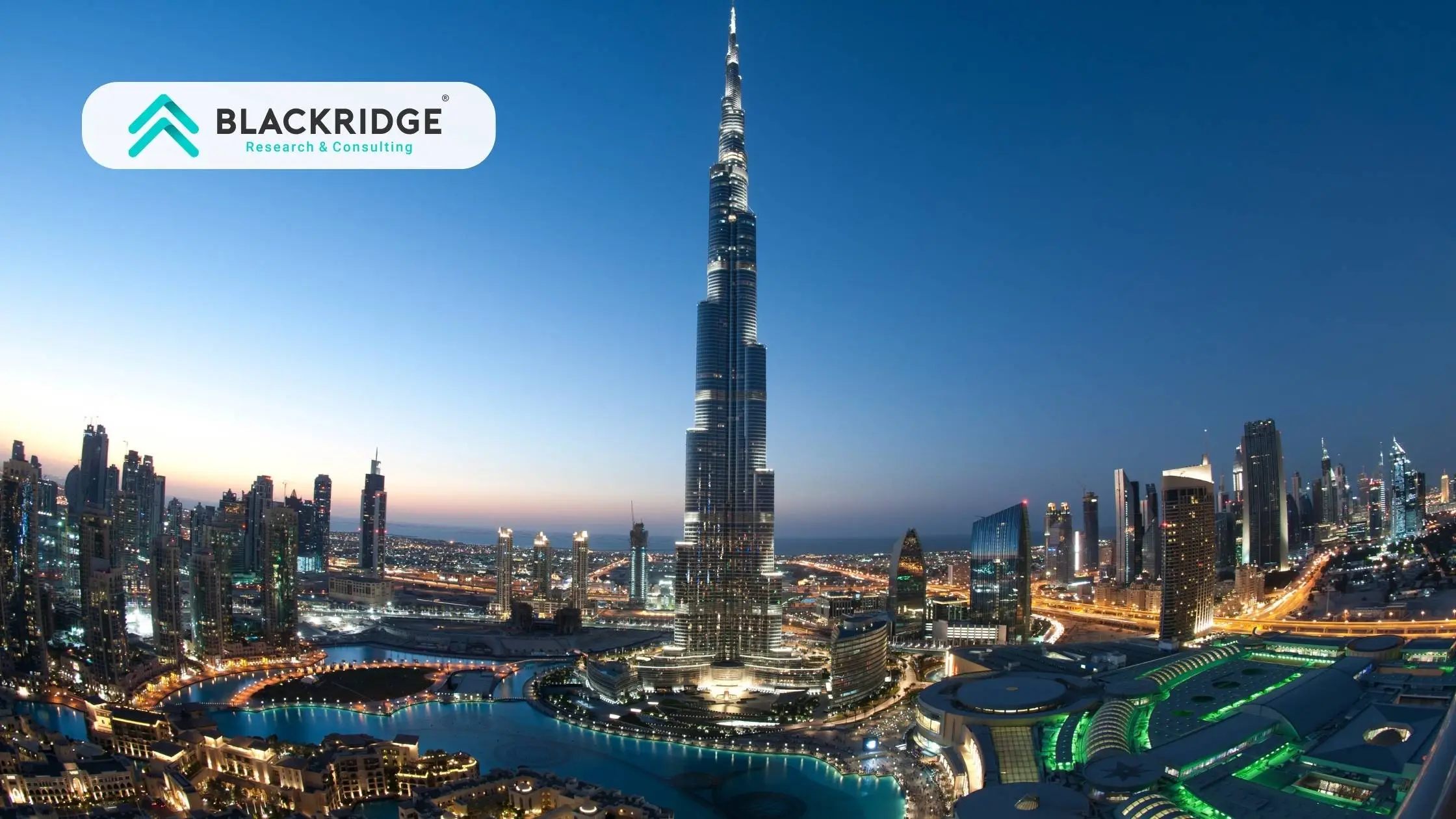
So, the skeleton is ready. Now it’s time to fill it up with muscles and fluids!
After the steel structure is made, then the floors are paved. After flooring, essential services like water, wiring, painting are done. Also, transportation services like stairs, elevators, and high speed lifts are installed.
The Buildings are then dressed in shiny glasses of various colors. It is important to note that this dressing is not just decoration. It adds to the beauty of the building and the city. The art of architecture should never be overlooked in skyscraper construction.
So, that’s all? Is the Skyscraper ready?
Well… almost! But we have to create one more substructure!
Building Roof or Spire
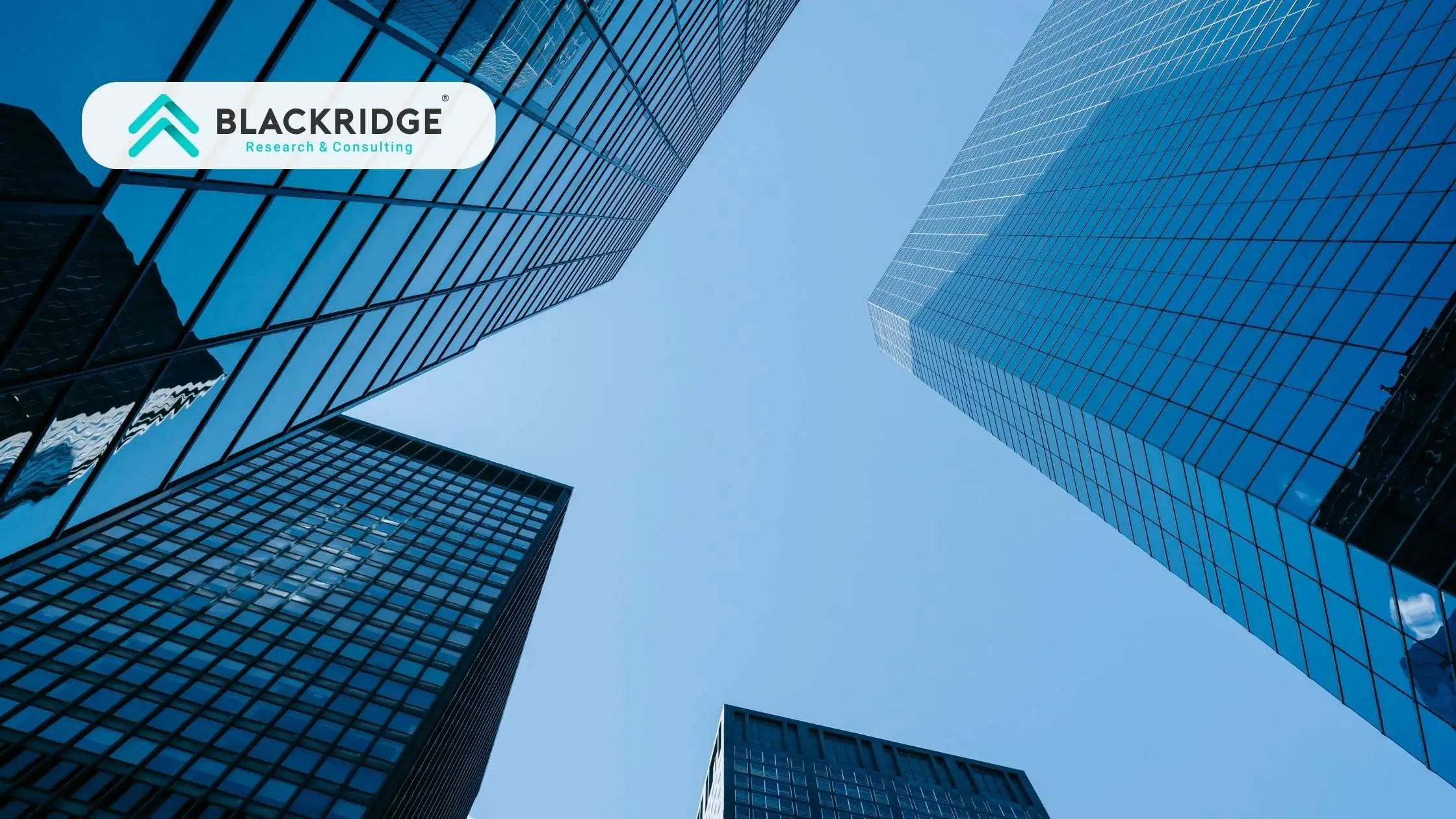
Since the beginning of construction, the spires have had an elevated significance. This is because they can be considered the head or the crown of the towers.
Naturally, it has to be the most elegant part of the skyscraper.
Modern skyscrapers have spires that are decorative and functional. The spire could serve as a lightning rod or a communication tower. Not only do spires make the buildings look more appealing, but they also increase the skyscraper’s height. A taller building without a spire can become the tallest building with one!
As for the flat roof areas, they can serve as public viewing decks!
Tallest Skyscrapers in the World
Building | Height (m) | Year Completed | Location |
Burj Khalifa | 830 | 2010 | Dubai, United Arab Emirates |
Jeddah Tower | 1000 | 2029 (estimated) | Jeddah, Saudi Arabia |
Willis Tower | 527 | 1973 | Chicago, United States |
The Shard | 310 | 2013 | London, United Kingdom |
Chrysler Building | 319 | 1930 | New York City, United States |
Empire State Building | 443 | 1931 | New York City, United States |
One World Trade Center | 546 | 2014 | New York City, United States |
Turning Torso | 190 | 2005 | Malmö, Sweden |
Woolworth Building | 241 | 1913 | New York City, United States |
Shanghai Tower | 632 | 2015 | Shanghai, China |
Petronas Towers | 451.9 | 1999 | Kuala Lumpur, Malaysia |
Conclusion
Skyscrapers are symbols of human ingenuity. We progress better and build higher. Who knows where the finish line is? Maybe one day, the skyscrapers would reach for the stars. Quite literally!
FAQs
What is the strongest part of a skyscraper?
The core or skeleton, usually made of steel and reinforced concrete, provides the main structural strength of a skyscraper.
How tall is a 100 story building?
A 100-story building is typically about 1,000 to 1,300 feet tall (305-396 meters), depending on ceiling height and design.
Which floor is best in skyscraper?
The middle floors of a skyscraper are often considered the best for balancing views, noise levels, and elevator access.
How many floors are in Burj Khalifa?
Burj Khalifa has 163 floors above ground, making it the tallest building in the world.
What is the biggest disadvantage to a skyscraper?
The biggest disadvantage of a skyscraper is high construction and maintenance costs, along with complex evacuation during emergencies.
How much does it cost to build a skyscraper?
The average cost to build a skyscraper ranges from USD 300 million to USD 1.5 billion, typically between USD 400 and USD 1,200 per square foot, depending on design and location.
What qualifies a building to be a skyscraper?
Skyscrapers now require a minimum height of 150 meters (492 feet) due to construction advances, though buildings with 10-20 floors were once labeled as such.
Read: 10 Hacks to Grow your Construction Business in 2025
Be the First to Know Exclusive Details About Construction Industry Projects Around the World!
Subscribe to our Global Construction Industry Database and unlock:
Comprehensive project details on planned, upcoming, ongoing, and commissioned construction projects
Timely updates on tenders and new developments
Access to key stakeholders and decision-makers
Market insights and future trend analysis by experts
Stay ahead with timely updates and developments in the Global construction sector by subscribing to Blackridge’s Global construction project database!
Why Blackridge’s Global Projects Tracker?
Blackridge’s Global Projects Tracker covers projects from 150 countries and is updated with real-time, accurate, and authentic project developments. By subscribing to our Global construction project database, you can get access to key contact details of ongoing and upcoming projects, project timelines and overviews, and regular alerts on project developments, all served to you through an easy-to-use interface.


![List of Top 5 Largest Construction Companies in Portugal [2025]](https://images.blackridgeresearch.com/zA7C1E09-z4Uj64Eb0zfkw/2b549578-fd97-4e1a-6ee2-9094c80f6400/public)




Leave a Comment
We love hearing from our readers and value your feedback. If you have any questions or comments about our content, feel free to leave a comment below.
We read every comment and do our best to respond to them all.